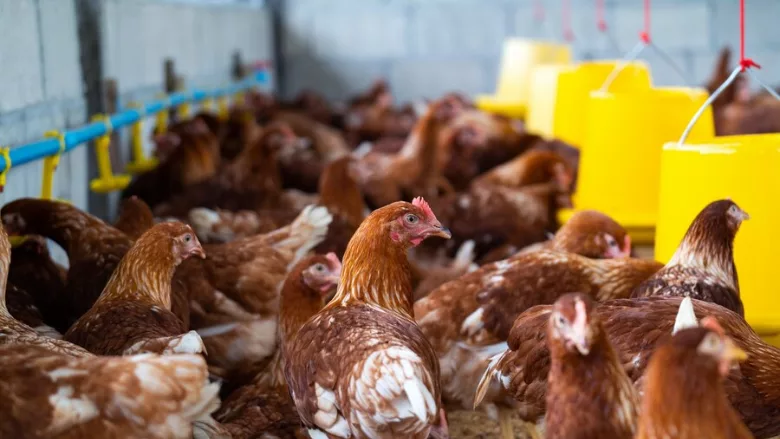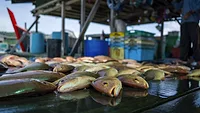Latest U.S. Poultry Report Shows Significant Decrease in Antibiotic Use for Farmed Chickens

Image credit: tawatchai07 via Freepik
According to the U.S. Poultry and Egg Association’s (U.S. Poultry’s) Antibiotic Stewardship report for 2013–2023, the proportion of U.S. broiler chickens in hatcheries that receive antibiotics has decreased from 90 percent to less than 1 percent over the 10-year period.
The findings in U.S. Poultry’s latest report are complimentary to recently published data from the U.S. Food and Drug Administration (FDA) regarding the sale of antibiotics for use in food-producing animals, which shows that, of the antibiotics sold in 2023, only two percent were intended for use in chickens. Another 10 percent were intended for use in turkeys.
Data used for U.S. Poultry’s peer-reviewed report was collected through the voluntary participation of U.S. poultry companies, and was collected, analyzed, and published under the research direction of Randall Singer D.V.M., Ph.D. of Mindwalk Consulting Group LLC and the University of Minnesota. The dataset covers the use of antibiotics from 2013–2023 for broiler chickens and turkeys, beginning at hatchery and ending at harvest, and from 2016–2023 for layer chickens, from the hatchery through production.
Between 2013 and 2023, not only did overall antibiotic use decrease significantly in broiler chickens, but so did the use of medically important in-feed antibiotic use. There has been no reported in-feed tetracycline use since 2019, and virginiamycin use has decreased by approximately 99 percent throughout the decade.
At the same time, while medically important, water-soluble antibiotic use in broiler chickens decreased from 2013–2019, the use of some water-soluble antibiotics increased from 2019–2023. Specifically, penicillin use decreased by more than 64 percent from 2013–2019, but jumped back up by more than 60 percent between 2019 and 2023 due to gangrenous dermatitis incidence—still resulting in an overall decrease of 42 percent since 2013. Also due to gangrenous dermatitis, lincomycin use decreased by 66 percent from 2013–2020, but increased by 11 percent between 2020 and 2023, amounting to a total reduction of 62 percent since 2013. However, the use of tetracycline and sulfonamide decreased by 70 percent and 82 percent since 2013, respectively.
For turkeys, antibiotic use in the hatchery decreased from 97 percent in 2013 to 40 percent in 2023. Hatchery gentamicin use decreased by 48 percent throughout the 10-year period, and in-feed tetracycline use decreased by more than 58 percent. Regarding medically important, water-soluble antibiotics, due to gangrenous dermatitis and a penicillin shortage, lincomycin use increased eightfold between 2019 and 2023, after seeing a 58 percent reduction from 2013–2019 (still amounting to a 50 percent overall decrease since 2013). Penicillin and neomycin use each decreased by 53 percent since 2013. Finally, tetracycline has seen a 19 percent decrease overall since 2013, despite an approximate 14 percent increase between 2019 and 2023 due to colibacillosis cases and secondary infections following avian metapneumovirus exposure.
The use of antibiotics in chickens and turkeys differ greatly due to turkey’s higher bodyweight, longer lifespans, and being more susceptible to illness and requiring larger doses of medication.
Looking for quick answers on food safety topics?
Try Ask FSM, our new smart AI search tool.
Ask FSM →
Antibiotic use in layer chickens also differs greatly in comparison to use in broiler chickens. Specifically, the use of antibiotics for layer chickens is much more conservative, and, per the data used for the report, the only medically important in-feed antibiotic used in laying hens was chlorotetracycline (CTC) due to its zero-day withdrawal period mitigating the loss of eggs during treatment. CTC was only administered via feed in pullets and hens, more than 95 percent of which was used for the treatment of disease, and less than 0.1 percent of total 10-day hens were exposed to CTC. No pullets in the dataset received CTC in feed during 2022 or 2023. At the same time, all chicks in the dataset received gentamicin in the hatchery, which were owned and operated by genetics companies.
The judicious use of antibiotics in food animal production is important to controlling antimicrobial resistance (AMR).
Every year, FDA, the U.S. Department of Agriculture (USDA), and the U.S. Centers for Disease Control and Prevention (CDC) compile the National Antimicrobial Resistance Monitoring System (NARMS) report, which tracks changes in the antimicrobial susceptibility of select foodborne pathogens isolated from clinical patients, retail meats, food-producing animals, and animal-derived foods. The most recent NARMS report covers 2021.








